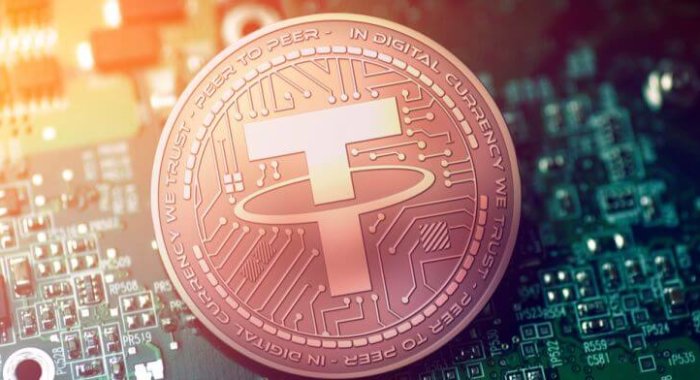'Ethereum's Future Is Bright': Vitalik Buterin Tackles Price and Layer-2 Frustrations
From decrypt by Sander Lutz
 Vitalik Buterin at ETH Taipei 2024. Photo: Rug Radio/Decrypt
Vitalik Buterin at ETH Taipei 2024. Photo: Rug Radio/Decrypt
Ethereum co-founder Vitalik Buterin laid out his latest thoughts on the blockchain’s future Friday, addressing head-on an issue that he rarely discusses: Concerns about ETH’s price, and the role of layer-2 scaling networks in depressing the asset’s financial health.
Layer-2 networks , built atop of Ethereum’s mainnet, now dominate the blockchain thanks to the miniscule gas fees and speedy transaction times they offer. But analysts have predicted that the proliferation of L2s could cost Ethereum trillions of dollars over the next few years, given how they muck up ETH’s token-burning roadmaps—and thus, the asset’s intended deflationary trajectory.
Indeed, as other cryptocurrencies have soared in recent months, ETH has remained defiantly stagnant—prompting a popular meme on Crypto Twitter.
On Friday, Buterin, who often appears more focused with niche technical matters than macro political and market dynamics , acknowledged the problems currently posed by L2s related to economics, as well as safety and interoperability.
“One possible shortcut for scaling is to give up on L2s, and do everything through L1 with a much higher gas limit,” the crypto developer wrote in a blog post . “However, this approach compromises too much of the benefits of Ethereum's current social structure.”
Instead of abandoning L2s, Buterin said, developers in the Ethereum ecosystem should focus their efforts on key priorities—including boosting ETH’s price.
“We should think explicitly about economics of ETH,” he wrote. “We need to make sure that ETH continues to accrue value even in an L2-heavy world, ideally solving for a variety of models of how value accrual happens.”
One proposal floated today by Buterin, to that end, involves layer-2 networks supporting ETH by either burning a portion of their fees, or permanently staking them and then donating the proceeds to the Ethereum community.
The Ethereum co-founder further called on layer-2 developers to work quickly to standardize cross-chain features and interoperability, and to further prioritize security—particularly, by eliminating the possibility for censorship on layer-2 chains that are run, in most cases, by private companies.
Last summer, for example, Linea—a layer-2 network owned by Ethereum giant Consensys (one of 22 investors in an editorially independent Decrypt)—manually shut down all on-chain activity in an effort to stop a multi-million dollar hack.
While well-intentioned, the move immediately prompted a tidal wave of condemnation from crypto users irate over how a supposedly decentralized network could so easily be shut off from a corporate office.
On the subject of true decentralization, and on numerous others, Buterin took a fairly blunt tone with layer-2 developers—acknowledging that their networks will be critical to Ethereum’s future, but only if they make critical adjustments in short order.
“We should stay the course, [and] continue to scale primarily through L2s, but make sure that L2s actually fulfill the promise that they were meant to fulfill,” he said.
The developer also emphasized the importance of rapidly growing blockspace for layer-2 transactions, to facilitate ecosystem growth—principally via the expansion of “blobs,” a new data storage mechanism introduced in last year’s Dencun upgrade .
Ethereum’s next upgrade, Pectra , now penciled for March, will pave the way to substantially increase the number of blobs on every Ethereum transaction block.
Buterin said outright Friday that Ethereum’s core developers “should be more willing to explicitly deprioritize features that are not blobs” in future network upgrades.
All in all, Ethereum’s leading mind appeared unafraid on Friday to speak his mind about what needs to change about the network’s infrastructure, and how soon. As Buterin has demonstrated numerous ways in recent weeks, he’s not playing around anymore—it’s “wartime mode.”
Disclaimer: The content of this article solely reflects the author's opinion and does not represent the platform in any capacity. This article is not intended to serve as a reference for making investment decisions.
You may also like
Ripple CEO Reveals the Truth About the Amount of XRP on the Company's Balance Sheet

Tether to Build 70-Story Skyscraper in El Salvador, Symbol of Prosperity

Tech giants bounce back after AI disruption, S&P 500 nears record high
Share link:In this post: Last week, the largest tech firms in the US experienced huge challenges from Chinese AI, DeepSeek. Apple and Meta reported positive results, boosting the S&P 500. The Magnificent Seven’s price-to-earnings ratio is now 31.
OpenAI launches o3-Mini as it fights back against DeepSeek
Share link:In this post: OpenAI has launched its o3-Mini AI model to fight back against DeepSeek’s latest model. The company mentioned in its blog post that the o3-Mini is the most cost-efficient model in their reasoning series. DeepSeek’s breakthrough caused a $1 trillion tech selloff while putting pressure on AI chip makers.
